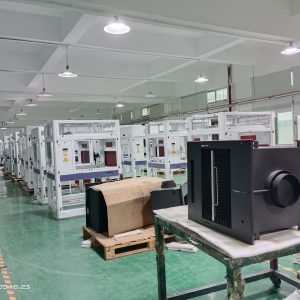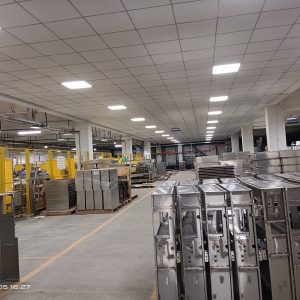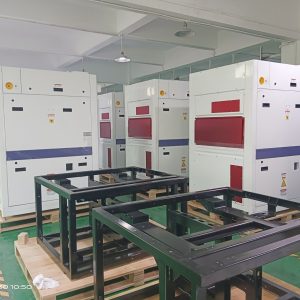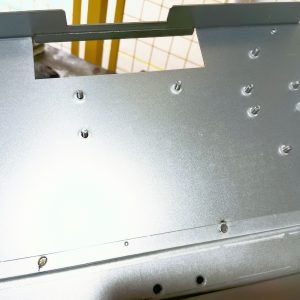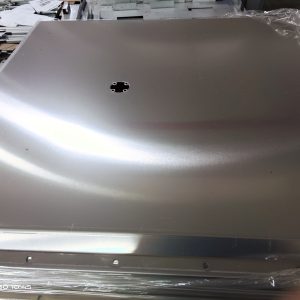Designing a sheet metal enclosure involves several steps and considerations to ensure it meets the functional, aesthetic, and environmental requirements of its intended use. Here’s a guide to designing a sheet metal enclosure:
1. Define Requirements
Functionality: Determine the primary function of the enclosure (e.g., housing electronics, protecting machinery, etc.). Identify key features such as ventilation, access points, and mounting requirements.
Environmental Conditions: Consider the operating environment, such as exposure to moisture, temperature extremes, chemicals, or electromagnetic interference (EMI).
Standards and Regulations: Ensure compliance with relevant industry standards and safety regulations, such as IP ratings for ingress protection, NEMA standards, or UL certifications.
2. Material Selection
Metal Type: Choose the appropriate metal based on the enclosure’s requirements. Common options include:
Steel: High strength and durability; often used for heavy-duty applications.
Stainless Steel: Corrosion-resistant; ideal for outdoor or harsh environments.
Aluminum: Lightweight, corrosion-resistant, and has good thermal conductivity; suitable for electronics and lightweight applications.
Copper or Brass: Used for specific applications requiring high electrical conductivity or EMI shielding.
Thickness: Select the appropriate sheet metal thickness (gauge) based on the structural and weight requirements.
3. Enclosure Design and Layout
Dimensions: Define the overall dimensions (length, width, height) based on the size and layout of the components to be housed.
Tolerances: Account for manufacturing tolerances in the design to ensure proper fit and assembly.
Features:
Access Points: Design doors, panels, or hatches for easy access to the interior components.
Mounting Provisions: Include mounting holes, brackets, or flanges for securing the enclosure to walls, floors, or other structures.
Ventilation: Incorporate vents, louvers, or perforations if cooling or airflow is required.
Cable Management: Design cable entry points, grommets, or conduit knockouts for routing power and data cables.
Handles and Hinges: Add handles, hinges, or locks for ease of use and security.
4. Thermal Management
Heat Dissipation: Incorporate features for passive cooling, such as heat sinks or airflow channels. For active cooling, consider adding fans or other cooling systems.
Material Consideration: Use materials with high thermal conductivity (e.g., aluminum) for enclosures housing heat-sensitive components.
5. Manufacturing Process
Cutting: Use laser cutting, plasma cutting, or punching to create precise cuts and holes in the sheet metal.
Bending: Design for bending operations, ensuring that bend radii are appropriate for the material and thickness to avoid cracking or warping.
Welding and Joining: Decide on the appropriate joining methods, such as welding, riveting, or bolting, depending on the enclosure’s strength and durability requirements.
Surface Finishing: Plan for surface treatment, such as powder coating, anodizing, or painting, to enhance durability and aesthetics. Consider finishes that provide corrosion resistance and electrical insulation.
6. Prototyping and Testing
Prototype Development: Create a prototype to test the design’s fit, functionality, and ease of assembly. Use rapid prototyping methods like CNC machining or 3D printing for faster turnaround.
Testing: Conduct tests to evaluate the enclosure’s performance under expected conditions, including thermal performance, EMI shielding, and ingress protection.
7. Final Design and Documentation
Final CAD Model: Refine the design based on prototype testing and feedback. Create a detailed CAD model that includes all dimensions, tolerances, and features.
Technical Drawings: Generate detailed technical drawings for manufacturing, including views, section cuts, and assembly instructions.
Bill of Materials (BOM): Prepare a BOM listing all components, materials, and hardware needed for production.
8. Production and Quality Control
Mass Production: Work with a sheet metal fabrication shop to produce the enclosure in the desired quantity. Ensure the shop has the necessary capabilities for cutting, bending, and finishing the selected materials.
Quality Control: Implement quality control measures during production to ensure consistency and adherence to design specifications.
9. Assembly and Integration
Assembly: Assemble the enclosure with its components, ensuring all parts fit correctly and operate as intended.
Integration: If the enclosure is part of a larger system, integrate it with other system components, verifying alignment and connectivity.
10. Packaging and Shipping
Packaging Design: Design packaging that protects the enclosure during shipping and handling, especially if it’s being transported to various locations.
Labeling and Documentation: Include labeling and any necessary documentation, such as installation guides, safety instructions, and compliance certifications.
By following these steps, you can design a sheet metal enclosure that meets your specific requirements, provides protection and functionality, and ensures ease of manufacturing and assembly.
Click sheet metal fabrication company china or china sheet metal forming manufacturers to learn more about sheet metal fabrication services.
For all your electrical enclosures from China, contact china sheet metal fabrication factory JIATONG now.
From Sheet Metal Fabrication Companies in China, china sheet metal fabrication manufacturers, china sheet metal fabrication companies – JIATONG
